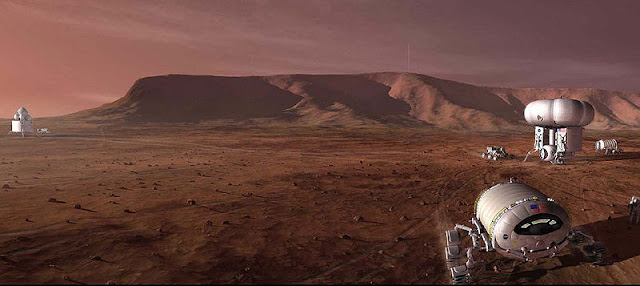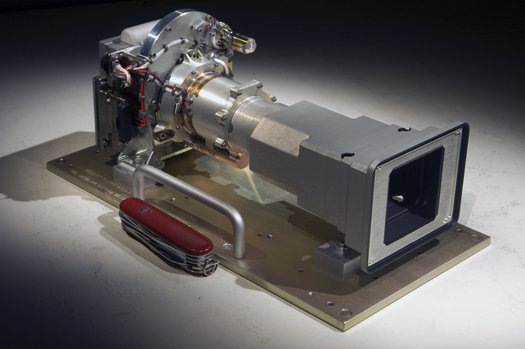In its lead editorial February 9, the New York Times called on the Obama administration to make human missions to Mars the goal of the American human spaceflight program. A complete discussion of the current political situation and potential initiatives for dealing with it will be held at the 13th international Mars society convention, August 5-8, 2010, Dayton Mariott, Dayton, Ohio. Registration for the conference is now open at www.marssociety.org.
Commenting on the administration’s new space policy released February 2, the Times said:
A New Space Program
February 8, 2010
President Obama has called for scrapping NASA’s once-ambitious program to return astronauts to the Moon by 2020 as a first step toward reaching Mars. That effort, begun by former President George W. Bush, is behind schedule and its technology increasingly outdated.
Mr. Obama is instead calling on NASA to develop “game-changing” technologies to make long-distance space travel cheaper and faster, a prerequisite for reaching beyond the Moon to nearby asteroids or Mars. To save money and free the agency for more ambitious journeys, the plan also calls for transferring NASA’s more routine operations — carrying astronauts to the International Space Station — to private businesses.
If done right, the president’s strategy could pay off handsomely. If not, it could be the start of a long, slow decline from the nation’s pre-eminent position as a space-faring power. We are particularly concerned that the White House has not identified a clear goal — Mars is our choice — or set even a notional deadline for getting there. The National Aeronautics and Space Administration and Congress need to keep the effort focused and adequately financed.
The most controversial element of the president’s plan is his proposal to scrap NASA’s mostly Moon-related technology programs that have been working to develop two new rockets, a new space capsule, a lunar landing capsule and systems for living on the lunar surface. Those efforts have been slowed by budgetary and technical problems. And at the current rate, the Moon landing would likely not occur until well after 2030. The technologies that looked reasonable when NASA first started in 2005 have already begun to look dated.
A lunar expedition would be of some value in learning how to live on the Martian surface but would not help us learn how to descend through Mars’ very different atmosphere or use that planet’s atmospheric resources effectively. Nor would it yield a rich trove of new scientific information or find new solutions for the difficulties of traveling deeper into space.
The president’s proposal calls for developing new technologies to make long-distance space travel possible: orbiting depots that could refuel rockets in space, lessening the weight they would have to carry from the ground; life-support systems that could operate indefinitely without resupply from Earth; new engines, propellants and materials for heavy-lift rockets; and advanced propulsion systems that could enable astronauts to reach Mars in a matter of weeks instead of roughly a year using chemical rockets.
Leaping to new generations of technology is inherently hard and NASA’s efforts may not bear fruit in any useful time period. To increase the odds of success, Congress may want to hold the agency’s feet to the fire and require that a specified percentage of its budget be devoted to technology development.
The idea of hiring private companies to ferry astronauts and cargo to the space station is also risky and based on little more than faith that the commercial sector may be able to move faster and more cheaply than NASA. The fledgling companies have yet to prove their expertise, and the bigger companies often deliver late and overbudget.
If they fail or fall behind schedule, NASA would have to rely on Russia or other foreign countries to take its astronauts and cargoes aloft. That is a risk worth taking. It has relied on the Russians before when NASA’s shuttle fleet was grounded for extensive repairs. It would seem too expensive for NASA to compete with a new rocket designed to reach low-Earth orbit — far better to accelerate development of a heavier-lift rocket needed for voyages beyond, as NASA now intends.
The new plan for long-distance space travel also needs clear goals and at least aspirational deadlines that can help drive technology development and make it clear to the world that the United States is not retiring from space exploration but rather is pushing toward the hardest goal within plausible reach.
We believe the target should be Mars — the planet most like Earth and of greatest scientific interest.
Many experts prefer a flexible path that would have astronauts first travel to intermediate destinations: a circle around the Moon to show the world that we can still do it; a trip to distant points where huge telescopes will be deployed and may need servicing; a visit to an asteroid, the kind of object we may some day need to deflect lest it collide with Earth. That makes sense to us so long as the goal of reaching Mars remains at the forefront.
At this point, the administration’s plans to reorient NASA are only a proposal that requires Congressional approval to proceed. Already many legislators from states that profit from the current NASA program are voicing opposition. Less self-interested colleagues ought to embrace the notion of a truly ambitious space program with clear goals that stir all Americans’ imaginations and challenge this country’s scientists to think far beyond the Moon.
http://nyti.ms/cNdUmQ












